Origen: Gto. Destino: Mexico
My favorite word I learned early on in Guanajuato was a weekend puente. When students at the UG refer to next weekend being a puente, they mean to say that we have Monday off. Over the semester, there are plenty of puentes to take advantage of to explore Guanajuato, catch up on homework or hit the road. By plane or the affordable lujo class busses, as a study abroad student I am privileged to say that much of Mexico is accessible and completamente vale la pena a conocer.
Here are just a few places to visit over a long weekend or spring break.
San Miguel de Allende
San Miguel de Allende, just a 90-minute bus ride east from Guanajuato, lives up to every feature she’s had in Sunset Magazine. San Miguel is the new found home of many a lost U.S. and Canadian soul, giving it a unique mix of life from all of North America. A drive to San Miguel for the day or the weekend is perfect to enjoy the nightlife, great food, art and natural hot springs!
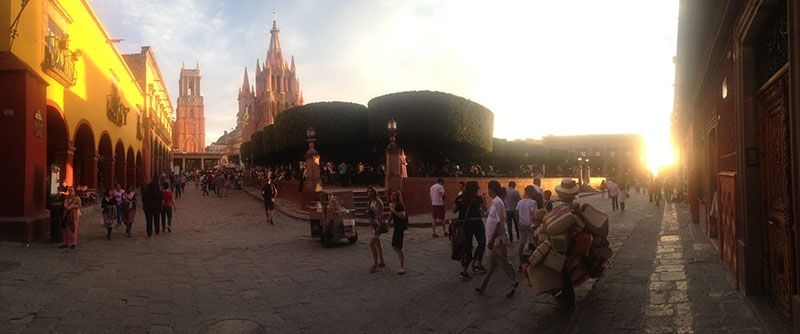
Mexico City, Mexico
Mexico City is the definition of Metropolis. With an unfathomable population and centuries of history lying under the streets that hold the worst traffic in the world, it demands more than a one weekend visit. Mexico City is easily accessible by bus from Guanajuato, only costing about $35USD round trip when the bus lines are running student discounts, or a 45minute flight from the Leon airport.
CIEE staff host a weekend excursion early in the term to hit major sites such as the mysterious Casa Azul, the pyramids of Teotihuacan and peaceful canals in Xochimilco. In one day we traversed 700 years of Mexican history in style.
La Casa Azul, home and studio of Frida Kahlo and Diego Rivera
Moving from the Templo Mayor (est. 1325) to a rapidly gentrifying neighborhood (est. 2015) for dessert, I was struck again by not only the sheer size of Mexico City, but of how varied its sites are. Hip young people sipping coffee, eating every type of cuisine you might crave, while finding their ways in life through art and degrees remind you again that you are in one of the major urban centers of the modern world with museums, parks and neighborhoods to explore for days.
El Museo Nacional de Antropologia is an impressive tribute to Pre-columbian indigenous cultures that form Mexico’s identity today. Founded in 1964 it houses the largest collection of artifacts in Mexico, including the famous Piedra del Sol and stone head figures of the Olmecs.
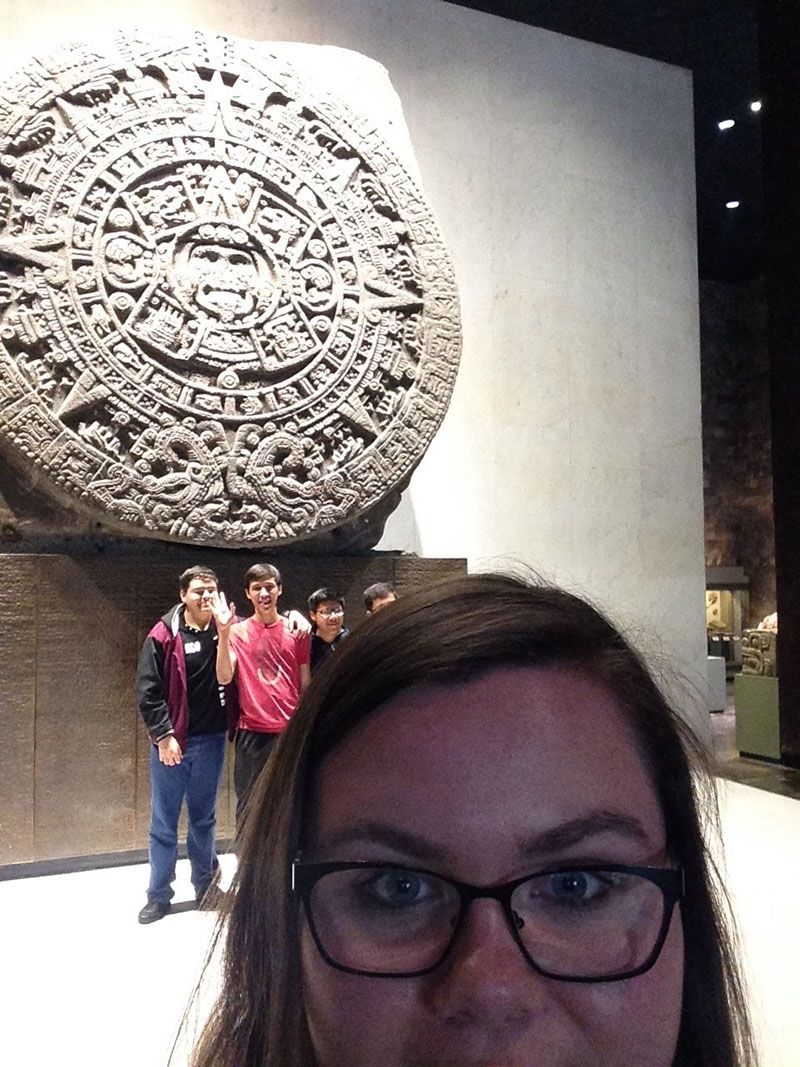
On a second weekend trip to the city, a newfound study abroad friend and I hit the town with a concert at the Pepsi Center where The 1975 was starting their world tour. After a late night of dancing with chilangos and admiring the tousled hair of lead singer Matty Healy, a lazy visit to Coyoacan was needed the next morning.
Uber is often the best way as a visitor to move around the city and for 100pesos (~$5USD) we were dropped off right in the heart of this peaceful neighborhood. Coyoacan is one of the most charming areas of the city with outdoor restaurants that serve fusion appetizers of chapulines (grasshoppers) and goat cheese, an artisan market with a surprising number of tattoo artists willing to give you a tattoo of the Virgen there in their stall and a cathedral that even in a country with hundreds of catholic temples is memorable.
Mexico City is a stark change of pace from Guanajuato and worth at least a couple of visits. It is historic, with avenues of monuments to the Revolution and archeological sites as gaping as the sinkholes that have plagued the city built on a drying lake bed, it is delicious and best of all always ripe for excellent people watching.

Guadalajara, Jalisco
Tequila capital of the world! One morning in my art class, Juliana, a compañera at the U.G. told me about her home city, the second largest in Mexico: Guadalajara. In her words, Guadalajara exports the Mexico that the rest of the world knows. Mariachi, maguey, and tequila all come from the beautiful state of Jalisco, bordering Guanajuato to the west (3hrs by bus). I spent a puente there with fellow CIEE students. In our travels around Mexico, AirBnB apartments and rooms have worked as excellent and affordable hospedaje. Guadalajara was no exception. We slept in the center of the city for three nights in a bohemian and absolutely not-up-to-code apartment near the stretch of historic churches, government buildings, the University of Guadalajara and Avenida Chapultepec. The Avenida is always bustling with bars, restaurants, artisan vendors and on the weekend salsa dancing in the street.
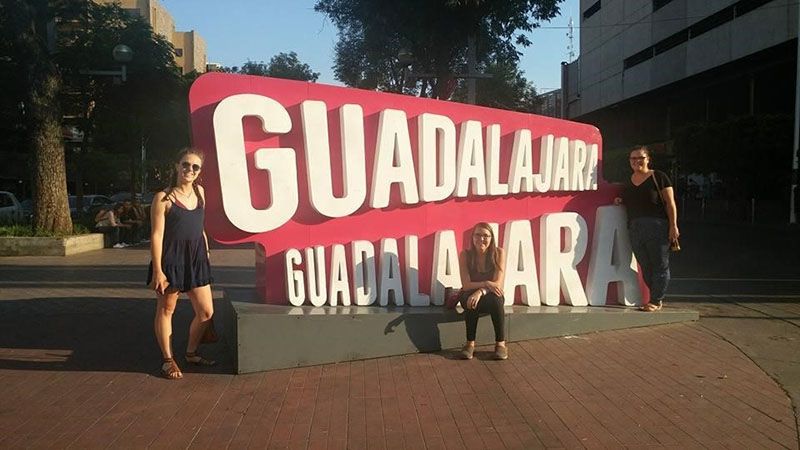
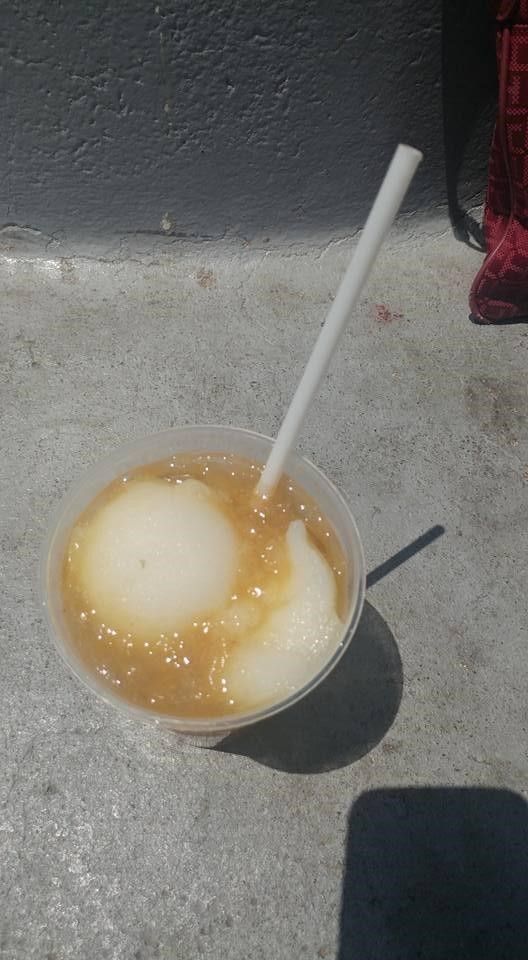
Tejuino, a refreshing drink native to Jalisco.
Made with a fermented maize base and lemon nieve
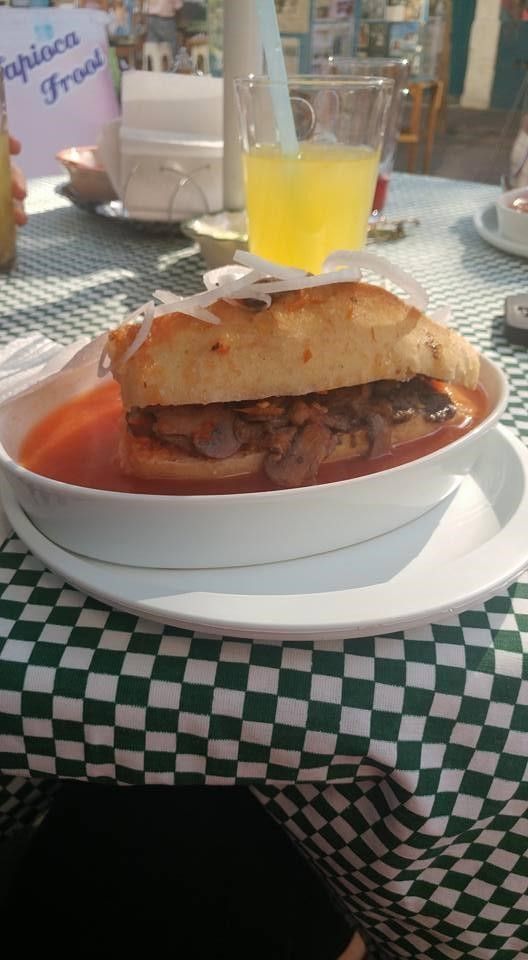
Vegan ahogado- a take on the local tortas in tomato base but with mushrooms instead of carne!
Oaxaca City, Oaxaca
Oaxaca City is the capital of one of the southernmost Mexican states and is known for its mole, mezcal and the ancient Monte Alban. There are at least seven different types of mole that one is required to try before leaving the state- negro, rojo, coloradito, amarillo, verde, chichilo and manchamantel that range from the classic chocolate and chile taste to plantain or curry flavors. Mezcal, a liquor made from the agave plant, is native to Oaxaca and it’s easy to find a fun rooftop mezcaleria that provides a full tasting.
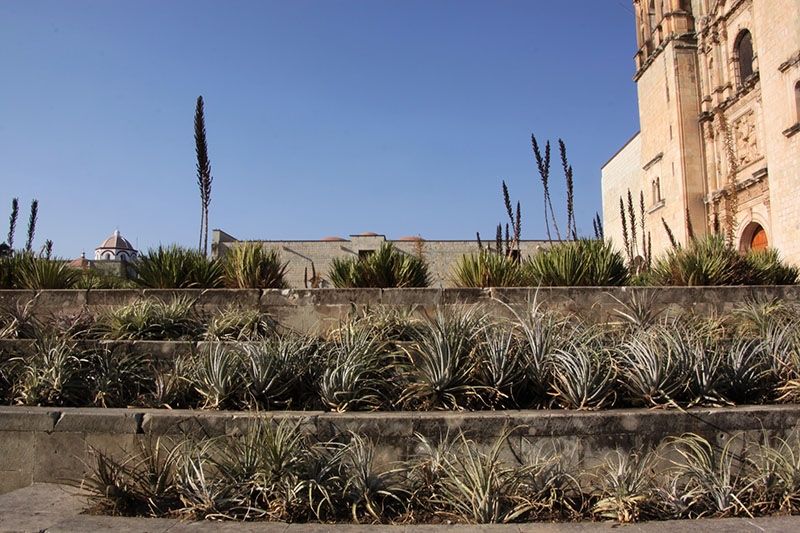
Oaxaca is also a study in the many layers of Mexico. For decades Oaxaca has had a rebel soul, protesting unjust working conditions and foreign economic policy.
In the central plaza, banners remembering the disappeared hang amidst vendors selling drinks and clothing to tourists. The university faculty on hunger strike announce themselves via giant banners that hang facing ancient churches and hip modern bars that cater to young students on vacation. In all, Oaxaca stands as a city that will fill every appetite-intellectually and gastronomically.
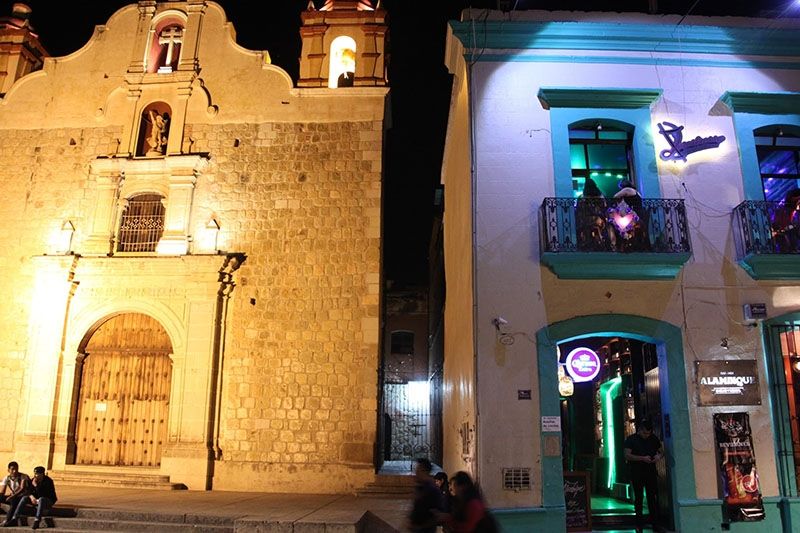
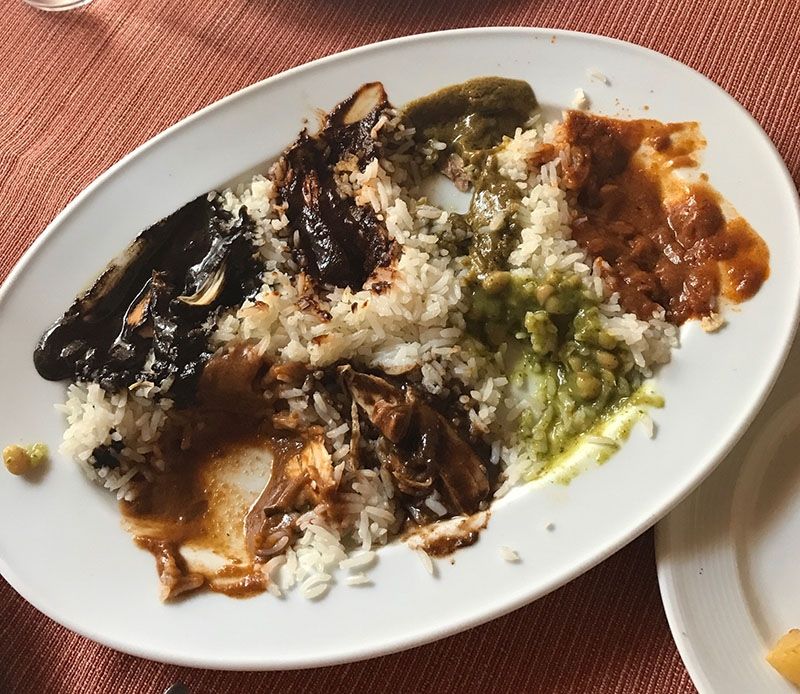
Mole sampler - half eaten
Campeche, Campeche
Spring study abroad students have a two-week break in honor of Semana Santa. To take advantage of the time off a trip farther afoot is in store. The state of Campeche, bordering the Yucatan and Guatemala, holds the attraction of Yucatan or Quintana Roo but is less traveled. The historic old town of San Francisco Campeche is a UNESCO world heritage site and a beautiful seaside port with plenty of fresh mariscos and ceviche to go around. My companeras and I rented a room (with a few extra roommates-lizards) on the beach and passed several days moving between the pool, the sun and the waters of the Gulf.
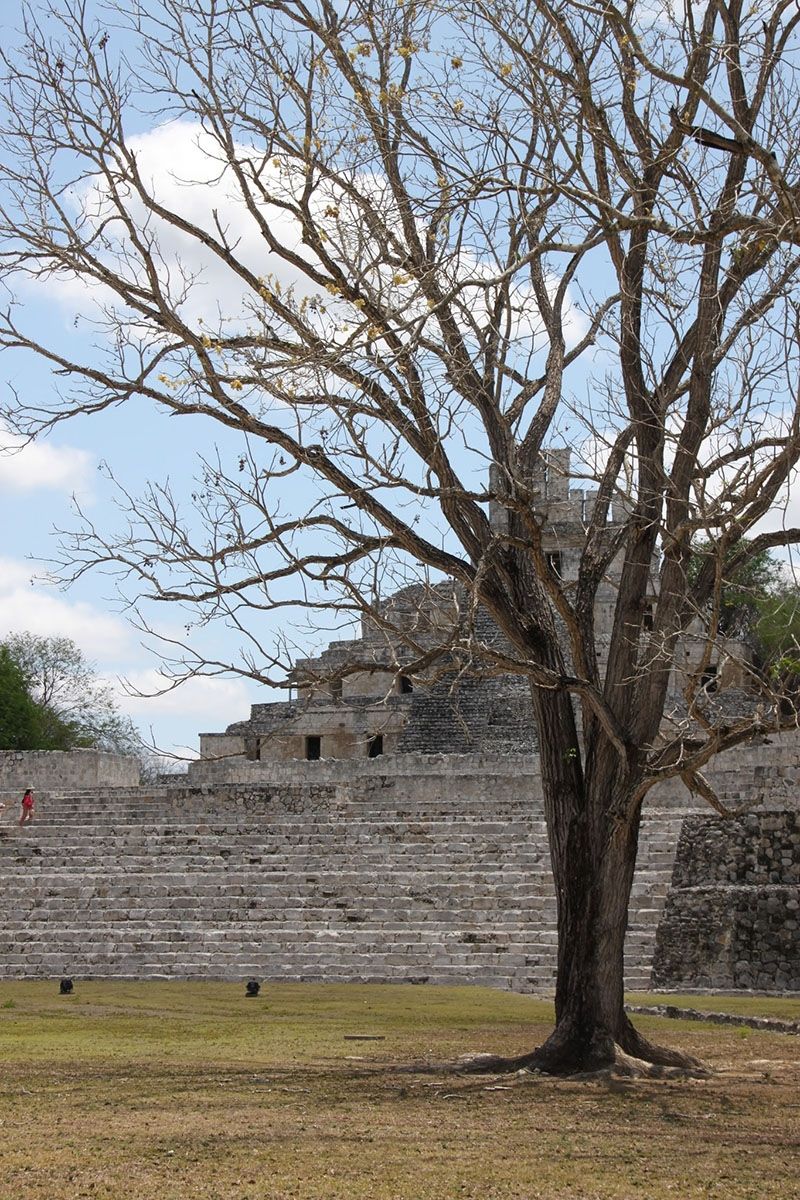
An hour drive from Campeche, in our case at the last minute in the van of our host’s gardener, is the archeological site Edzna. Edzna is still being uncovered but completely worth a visit. The ruins date back to 400 a.c. and unlike other sites in Mexico is not highly trafficked. The day we visited we shared the entire park with only one other family. It is also home to a monton of iguanas, many at least two-foot long, peaceful and roaming wild.
As you deplane into the hot muggy air, get yourself a coconut paleta, a hammock and a tamarind margarita and start relaxing.
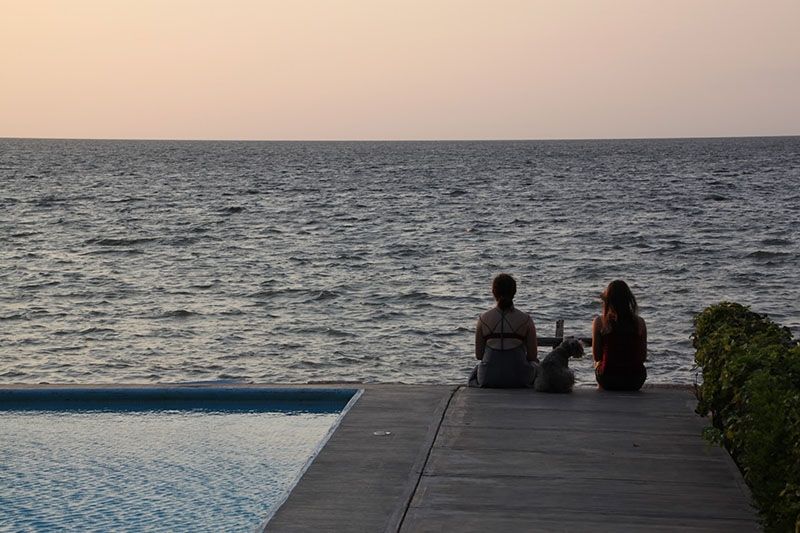
-Text and photos by Madeleine Edwards
Related Posts

EAT, DRINK, EXPLORE: MERIDA
BEST FOOD TO EAT IN MERIDA Yucatecan cuisine is heavily influenced by the ancient Maya who successfully turned local crops like tomatoes, turkey, chiles, corn, and pumpkins into complexly flavored... keep reading
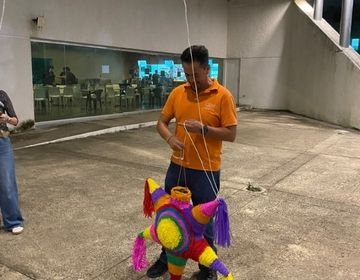
Why Should You Choose to Study Abroad in Mexico?
By: Michael Kline Are you ready to embark on a journey that combines academic enrichment, cultural discovery, and personal growth? Studying abroad in Mexico with CIEE offers all this and... keep reading
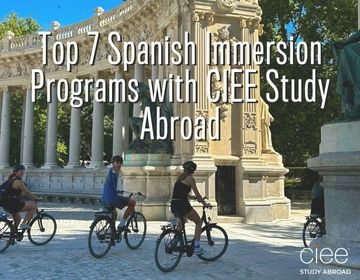
Top 7 Spanish Immersion Programs with CIEE Study Abroad
Let’s be real: There’s no better way to learn Spanish than actually living it. Forget the textbook exercises and Duolingo streaks – envision yourself chatting with locals about fútbol (not... keep reading
